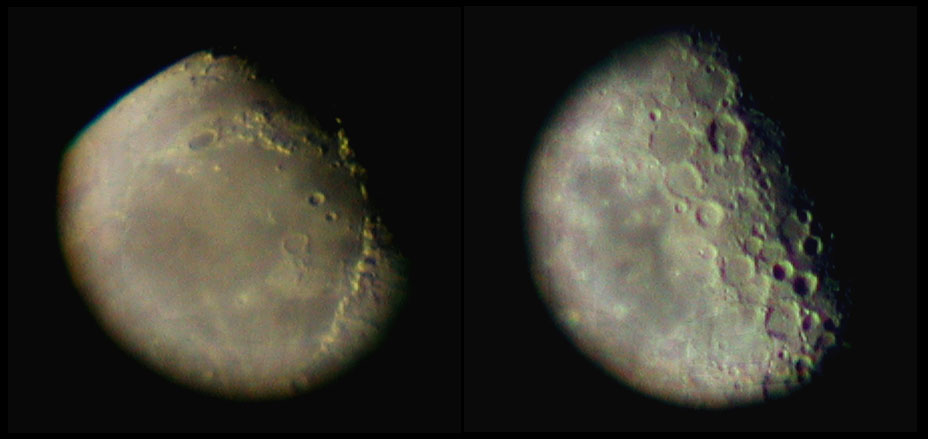August 15, 2017
Galileo's Moon?
Originally published January 27, 2008

images by Tom Pope Left: Mare Imbrium with Plato near the top. Right: the central part of the Moon, with the famous trio of craters Ptolemaeus, Alphonsus and Arzachel a little above and to the left of center.
In the spring of 1609 -- nearly 400 years ago -- the famous Italian astronomer Galileo Galilei learned of the invention of the telescope. Within weeks he had fashioned a device of his own consisting of two eyeglass-like singlet lenses: a long focal length positive one for the objective and a short focal length negative one for the eyepiece. Towards the end of the year, after testing it extensively on terrestrial targets, he turned his new "invention" on the heavens, including the Moon. What did he see? From the relative crudeness of the Sidereus Nuncius it is generally assumed that his view must have been similarly poor.
Retired professional planetary photographer and aerospace engineer Tom Pope wondered if this was true, and constructed an optical replica of Galileo's telescope with two good quality modern singlet lens. This pair of photos, taken through the eyepiece of that telescope with a common digital camera, give an impression of what Galileo would have seen if his lenses were of similar quality. As many authors have noted, the field of view in a telescope like this is very small, forcing Galileo to explore the Moon in small sections, like those shown -- as if he were looking down a long pipe. But the so-called chromatic aberration -- said by many (who have evidently not tried it) to completely ruin the images -- has surprisingly little effect. It can be seen, for example, in the slight blue haze fringing the limb in the left-hand view, and the general softness of both images. Also, since Galileo was viewing these images with no more than 20-30X power, these little circles of moonlight would have looked only 5-7 degrees across in his visual field (about the size of an American Quarter held at a close reading distance), making them look much crisper and color free than they do when blown up on the computer screen as they are here.
Did Galileo have lenses this good? Probably not in his first telescopes, but by January 1610 he had obtained lenses good enough to resolve the Moon's of Jupiter; and his drawings from later years, particularly of the Trapezium in Orion, demonstrate that at least by then he had achieved a resolution very similar to that seen in Tom's little replica.
Jim Mosher
Technical Details
- Telescope: 25 mm diameter singlet objective (1000 mm focal length) + 25 mm diameter eyepiece (-50 mm focal length), mounted in PVC tube.
- Photos:
- Camera: Olympus C-3000 camera looking through eyepiece
- Observing site: Vancouver, WA (45.6339°N, 122.5066°W, 96 m elev)
- Date/time: Nov. 26, 2002, 08:58 UT (left) and 08:53 UT (right)
- Exposure: 1/8-sec, ISO-100
- Seeing: mediocre
Related Links
- Tom's website
- An earlier LPOD: The Beginning of Lunar Science
Yesterday's LPOD: Dome Students
Tomorrow's LPOD: The Long and Skinny
COMMENTS?
Register, Log in, and join in the comments.



